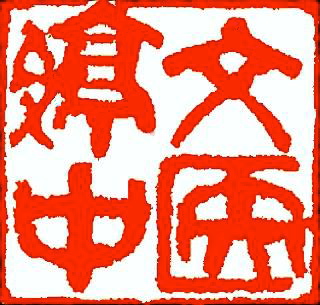Chinese medicine is based on influences of the immediate time frame in relation to a particular person and what is therapeutically best at a particular juncture. In Chinese medicine there is no one-size-fits-all diagnosis or cure; we necessarily assess in the moment. It is easy to belong to a group or way of thinking where there are fundamental rules of what to do, take, and how to eat. For us in Traditional Chinese Medicine (TCM), we are always assessing the patient in their present dynamics. We diagnose and form treatment by pattern assessment of the individual, not by the defining, generalized symptoms of a disease. This is what Chinese medicine is so good at and why it works.
There is a saying in Chinese medicine:
‘Same illness, different name; Different name, same illness’
Yi bing, tong zhi; Tong bing, yi zhi
同病異治, 異病同治
TCM is a style of medicine that is primarily based upon pattern discrimination. The above statement means that two patients with the same named disease diagnosis may receive entirely different treatments if their TCM pattern discrimination is different; while two patients with different disease diagnosis may receive the same treatment if their TCM pattern discrimination is the same. In the name of medicine, modern people rename patterns which have always existed. Each person exhibits variations unique to their own internal strengths and weaknesses, often rendering a patient’s condition an anomaly by Western diagnosis. A Western medical diagnosis or a title is not necessary to effectively treat by Chinese medicine, although is usually of interest to note. Rather than crucial information, Western perspective on pathology often obstructs a patient’s comprehension of their illness, and what it takes to generate healing and balance using Eastern medicine.
A Broad Array of Health Functions and Disease Conditions Respond Well To TCM Treatment. Acupuncture And Chinese Herbs Have Favorably Treated The Following Conditions:
Neurological Conditions:
including headaches, migraines, sleep disorders, nervous tension, stroke, seizures, some forms of deafness, intercostal neuralgia, trigeminal neuralgia, some forms of paralysis, peripheral neuropathy, tinnitus, dizziness, vertigo, Meniere’s disease, and Parkinson’s disease, Raynaud’s syndrome, and post-herpetic neuralgia, lupus, and various auto immune and inflammatory disorders
Cardiovascular Disorders:
including high and low blood pressure, fluid retention, chest pain, angina pectoris, poor circulation, cold extremities, muscular cramps, anemia, premature aging, and diabetes
Respiratory Conditions:
including asthma, bronchitis, tonsillitis, rhinitis, sinusitis, hay fever, chronic allergies, cough, laryngitis, sore throat, influenza and common colds, and shortness of breath
Digestive System Conditions:
including hiccough, esophageal spasm, gastric and duodenal ulcers, hepatitis, gastric hyperacidity, gastritis, heartburn, hiatal hernia, flatulence, colitis, diarrhea, constipation, hemorrhoids, liver and gall bladder disorders, chron’s disease, toothache, gingivitis, mouth ulcers, and weight maintenance
Urological Conditions:
including cystitis, prostatitis, low sexual vitality, urinary retention, kidney disorders, nocturnal enuresis, urinary frequency, and stones
Gynecological and Obstetric Conditions:
including menopausal syndromes, premenstrual tension, menstrual irregularities, amenorrhea, uterine bleeding, vaginitis, hormonal imbalances, prolapsed uterus or bladder, UTI, fertility issues, habitual miscarriage, and morning sickness, delayed labour and labour pain, breech presentation, and insufficient lactation
Skin Conditions:
including eczema, dermatitis, psoriasis, herpes zoster, acne, scar tissue and adhesions, alopecia and problems with hair, and dandruff
Eye Conditions:
including visual disorders, red, sore, itchy or watery eyes, conjunctivitis, simple cataracts, myopia in children, and central retinitis
Musculoskeletal Conditions:
including osteo and rheumatoid types of arthritis, sciatica, lumbago, ankylosing spondylitis, back pain or weakness, gout, tenosynovitis, neck pain, “frozen shoulder”, “tennis elbow” and all joint issues, costochondritis, facial pain and gout
Emotional and Mental Disorders:
including depression, neurosis, mania, anxiety, anger, frustration, control, resentment, grief, sadness, worry, pensiveness, obsessive compulsive disorder, schizophrenia, borderline personality disorder, panic, and post-traumatic stress disorder
Sports Medicine:
including sprained ankles and knees, deteriorating cartilage, torn muscles and ligaments, contusions, athletic performance optimization, and post-surgical rehabilitation
Treatable Children’s Health Concerns:
including digestive and intestinal conditions, cough, sinus discharge, lung congestion, seizures, fevers, cradle cap, prickly heat and skin problems, childhood infectious diseases, asthma, strep throat, lack of appetite, bed wetting, allergies, and hyperactivity
Adjunctive Oncology Support:
including cancer pain, lethargy, adverse reactions to chemotherapy, digestive, nervous system impairment and end of life paliative and hospice care
Addictions:
including tobacco, alcohol and drug dependence
Preventative Care:
The principle actions of acupuncture and of moxibustion regulate homeostatic functioning of the human body, increasing its resistance to disease conditions. By enhancing the immune system and building the body’s adaptive capacity many future health conditions may be entirely prevented.

The World Health Organization has indicated a comprehensive list of diseases that lend themselves to treatment by acupuncture. “Acupuncture is clearly not a panacea for all ills but the sheer weight of evidence demands that acupuncture must be taken seriously as a clinical procedure of considerable value.”
“Health is a state of complete physical, mental and social well-being, and not merely the absence of disease or infirmity.” ~World Health Organization, 1948
![]()